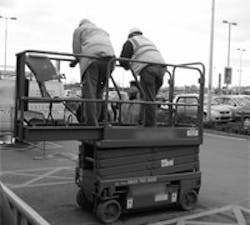Safe Engineering Practices Fail to Make Headlines
"Good Engineering Saves Millions of Lives After Earthquake, Tsunami" is a headline you will never see in the mainstream press or even in much of the technical media. But it should be trumpeted far and wide. That's because it's true. But why isn't this being discussed? You have to ask yourself why.
In 1923, Japan suffered what has been called the Great Kant Quake—a triple blow with a typhoon, a large earthquake and a tsunami occurring simultaneously. More than 100,000 people died, and another 42,000 went missing, mostly from earthquake-caused fires in Tokyo and from the 10-meter-tall tsunami waves. One of the few buildings in Tokyo barely damaged by the quake was the Imperial Hotel, designed by Frank Lloyd Wright to be earthquake-resistant according to the best standards of the time, and which remained in use until 1968.
So far, in the aftermath of the 2011 earthquake and tsunami, there are far fewer deaths and much less destruction, even though the magnitude of the quake appears to have been far greater. Again, you have to ask yourself why.
And then there is the continuing drama of Fukushima Daiichi. Based on the news reports at this writing, the reactors have variously survived, melted down, had partial meltdowns, exploded, produced clouds of radioactive smoke or are raging out of control. In other words, the media community has no blinkin' idea what is going on. Once more, you have to ask why.
Certainly, the media can turn to experts, but unfortunately, the progression of experts has moved from the more knowledgeable to the more sensational. Why is that?
Part of the reason is sensationalism itself. A world-ending nuclear-meltdown crisis is much more exciting than a story about very dedicated engineers and technicians risking their lives to get the reactors cooled down, so they can be repaired. It is much more exciting to report on a collapsed building than on the several nearby that did not, and why they didn't.
But you have to ask yourself why the news media think they can get away with this kind of terrible, non-factual (sometimes clearly even fictional) reporting.
Almost certainly, the press can get away with this abysmal level of reporting because the scientific literacy of the population is so low—and so is that of most reporters.
Even the NRC, the Japanese power company TEPCO and the Nuclear Energy Institute don't attempt to put responsible perspective into their reports. They will, for example, say that the levels of radioactive iodine are "high," but they don't explain what that means, nor do they explain why they then say, "There's no immediate danger to the population." Anybody raised since Three Mile Island has had it drummed into their heads that the phrase "no immediate danger" must mean its opposite.
This is not an attempt to whitewash TEPCO or the Fukushima Daiichi plant staff and rescue workers. They've clearly made some interesting and possibly quite poor decisions since the tsunami and quake, and they have a history of falsifying reports that goes quite a way back.
What the reporting since the earthquake shows is that the public conception of engineering and its value is nearly nonexistent. Otherwise, all the engineering man-centuries that went into earthquake proofing Japan's structures, and all the engineering man-hours going into keeping Fukushima Daiichi from becoming a real disaster instead of an imagined one would be getting coverage on page one.
But none of the large media outlets are even trying to focus on the fact that the death toll from this quake and tsunami is going to be less than half that of the 1923 quake, even with a significantly higher population. Why? Because of engineering. Good engineering.


